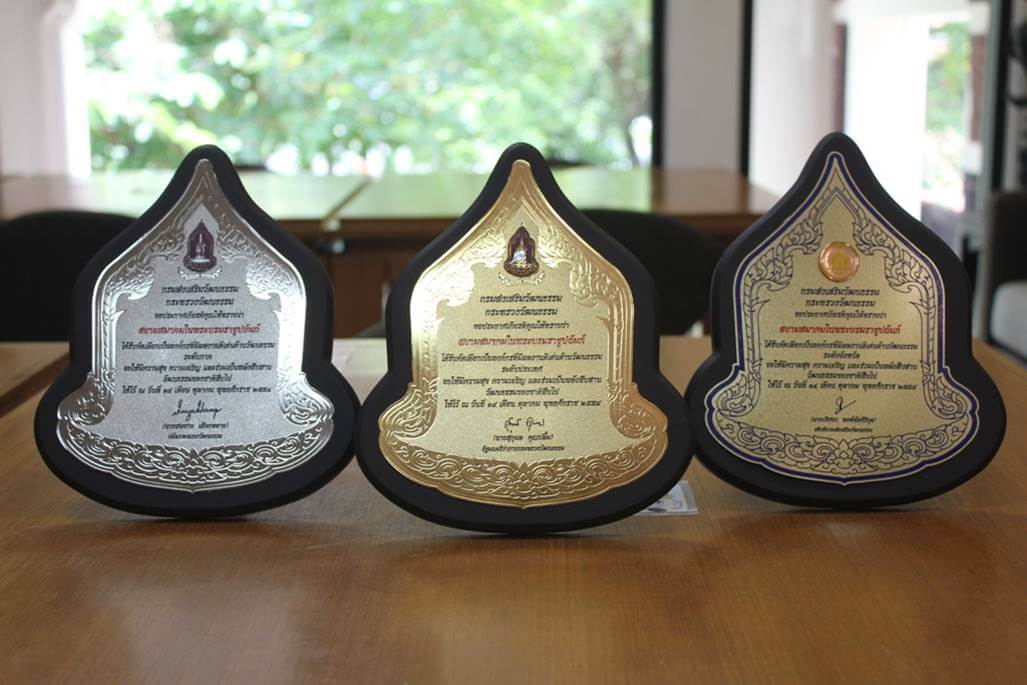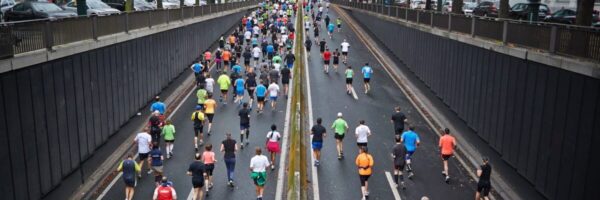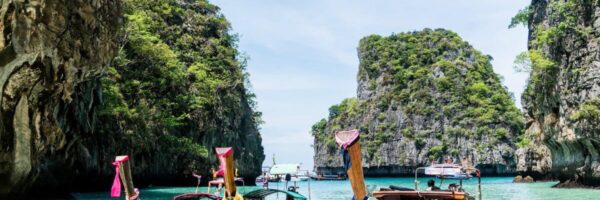
Thailand’s most prestigious scholarly organisation: The Siam Society
The Siam Society is the most prestigious scholarly and illustrious cultural organisation in the Kingdom. It is only rivalled by the exclusive Royal Bangkok Sport’s Club for venerability and distinguished membership. Operating under Royal patronage, its mission is to widely promote Thailand’s arts, culture, history, and the natural sciences including those of neighbouring countries.
The Siam Society was founded on 26 February 1904 by a group of Thais and international scholars. Fifty of the most distinguished citizens and foreign residents of Siam met at the Oriental Hotel in Bangkok to form the Society. The first meeting was held on 10 March 1904. The members agreed that: “The first resolution proposed was to the effect that those there assembled should form themselves into a society for research and investigation in matters appertaining to Siam”. By the time of the first general meeting was held on 7th April 1904, there were 103 members enrolled. It quickly gained a strong reputation for having illustrious archeologists, scientists, academicians, historians and scholars among its membership.
H.R.H. Crown Prince Vajiravudh (later H.M. King Rama VI, reigned 1910−1925) became the Society’s first Patron. One of Thailand’s leading scholars and then President of the National Library of Thailand, H.R.H. Prince Damrong Rajanubhab, became the Vice Patron. Chao Phraya Bhaskarawongse (Phorn Bunnag) was bestowed with an honorary membership in recognition of his distinguished scholarly research in the field of literature. His generosity by placing his extensive library at the disposal of Society members was also well noted.
International scholarly societies throughout the world immediately extended their support. These included the Royal Batavian Association of Arts and Sciences, the École Française d’Extrême-Orient, the Società Asiatica Italiana and the Royal Asiatic Society. The Siam Society’s library collection of publications was created from these Societies.
At the start, the Siam Society rented meeting rooms and its library were housed in various locations. In 1922 it moved into semi-permanent quarters on the first floor of the Falck and Beidek Building on Chartered Bank Lane near the Oriental Hotel. In 1925, the Natural History Society of Siam, founded in 1903, was merged with the Siam Society. The Society’s emblem was designed in 1926 by H.R.H. Prince Narisara Nuwattiwong. It shows “the head of an elephant holding with his trunk a garland of flowers”. The emblem incorporates the motto: “Knowledge gives rise to friendship”, was composed by H.R.H. Prince Damrong Rajanubhab and H.R.H. Prince Dhani Nivat. The Society has explained that: “This motto tries to convey the idea that the search for knowledge is the bond which unites the Siamese and foreign members of the Society in a friendly spirit of collaboration”. In 1927, the emblem first appeared in the Journal of the Siam Society. In 1931, Ahamad Ebrahim Nana, a noteworthy businessman of Indian origin, donated three rai (0.48 hectare) of land on what was then the far outskirts of Bangkok at 131 Asoke Montri Road. The building was designed by British architect Edward Healy. It officially opened on 28th February 1933. It has an auditorium with a high ceiling and three-metre-high glass doors along each long side that opens onto the gardens. There is also a stage located at the far end. The auditorium’s interior is decorated with antique carved woodwork from SE Asia.
The Society had to change its name to the Thailand Research Society in 1939 due to the nationalistic polices of Field Marshal Plaek Phibunsongkhram when he renamed the country Thailand from the previous name of Siam. It reverted back to the Siam Society in 1945. The Society also founded a Research Centre in 1954. It was funded by generous donations, including one from H.M. King Bhumibol Adulyadej (King Rama IX) and the Ford Foundation. In 1962, the Society’s second building was constructed. This contained a library and an office. H.M. King Bhumibol, H.M. Queen Sirikit, H.M. Queen Rambai Barni, H.M. King Frederik IX of Denmark, and H.M. Queen Ingrid of Denmark graciously participated in the library’s dedication.

In 1988, on the occasion of The Siam Society’s 84th anniversary, and also in commemoration of her late husband Acharn Saeng Aroon, Khun Lada Ratkasikorn bestowed the gift of a teakwood house. It is an excellent example of central Thai architecture. Saeng Aroon House was opened by H.R.H. Princess Galyani Vadhana, then Honorary President of The Siam Society Under Royal Patronage, on 26 February 1988.
In the 1990s, the Society conducted a project on “National Living Treasures”. This included performances of music, dance, and puppetry. In 1993 Nang Kimhaw Nimmanahaeminda of Chiang Mai presented the stately Kamthieng House to the Society. It is an outstanding example of old northern Thai architecture. It is named after the donor’s mother, Nang Kamthieng. The teakwood house was originally built in the mid-19th century in Chiang Mai and reassembled on the Society’s grounds. Today the structure serves as an ethnological museum and is open to the public.
In 1997, the Chalerm Phrakiat Building was constructed to honour of the 50th coronation anniversary of H.M. King Bhumibol. It houses the library, an exhibition space, meeting rooms, facilities and an office for permanent staff. On 30 September 1998, the building was graciously opened on behalf of H.M. King Bhumibol by H.R.H. Crown Prince Vajiralongkorn. In 2002, the Association of Siamese Architects Under Royal Patronage conferred a special award to The Siam Society for its excellence in preservation of the historically significant buildings, namely the Auditorium, the Kamthieng House, and Saeng Aroon House on the Society’s compound.
In 2011 the Siamese Heritage Trust was established to increase the knowledge and awareness of cultural heritage management and general public interest as a national issue. The Trust focuses its work on four areas: networking, knowledge, education, and advocacy. Programmes under these four areas include lectures, public conferences, study trips, seminars, publications, and media opinion pieces.
In 2012, the Ministry of Culture of the Royal Thai Government awarded the Society “Best Cultural Organisation” status at the provincial, regional and national levels. Also in 2012, the complete back catalogue of over two thousand articles and reviews of the Journal of the Siam Society was made available on the internet. In 2013, the Council Minutes Books from 1904−2004 were inscribed in UNESCO’s Memory of the World International Register. They testify to the scope of work, and continuous cooperation, of an international and intellectual nature among the many generations of Council Members elected to carry out the work of The Siam Society. In 2014, the Thai Library Association conferred “Outstanding Specialist Library” status on the Society’s library. In 2019, the Trust published a guide to the laws on Thailand’s heritage as e-books both in English and Thai. Since 2019, the Siam Society Journal has been listed on the Scopus database of academic journals.
The Siam Society has been a pioneer in the publication of scholarly and scientific books about Thailand and the region. They are printed mainly in English and cover a wide range of subjects. As one of the most specialised libraries in the world, the Society’s library has thousands of books in the fine arts, humanities, social sciences and natural sciences of Thailand and other countries in SE Asia. The library is also noted for its outstanding collections of rare books and palm leaf manuscripts. There is also a collection of valuable art objects as donations from members and others. These donations including 34 ancient maps, 96 pieces of sculpture, 110 pieces of ceramics, 60 religious paintings, 700 woodcarvings, 400 plus pieces of textiles, over plus miscellaneous artefacts including Khon masks and puppets. Many of these unique pieces are displayed throughout the Society’s buildings.
Lectures are periodically given in English on weekday evenings. Distinguished authors, academicians, assorted professionals, visiting scholars, leading experts, and other enthusiasts are featured. Subjects include antique textile collections, new archaeological finds, Thai history, and contemporary Thai artists and designers. Lectures presented in Thai are usually scheduled on Saturdays during the day.
The Society also conducts study trips both within Thailand and overseas. Trips within Thailand are usually 1 – 3 days in length. They will highlight a historical site, cultural performance, or heritage preservation project. Experts from the Society’s membership and network serve as guides. Musical concerts and cultural performances are regularly staged in the auditorium, and occasionally outside on the grounds. Besides classical music, both Thai and western, there have been performances of Kathak dance from India, Taiko drumming from Japan.
The Journal of the Siam Society publishes original articles of a scholarly nature. Printed in English, it covers Thailand and neighbouring countries with a wide range of disciplines including archaeology, history, epigraphy, religion, ethnology, language, art and literature, architecture, and the performing arts. The Journal has been continuously published since 1904. The Natural History Bulletin of The Siam Society is a biannual publication of scholarly articles on the flora and fauna of Thailand and neighbouring countries.
There are approximately 1,200 members from around 60 countries. The Society has greatly benefited the kingdom for well over a century.



